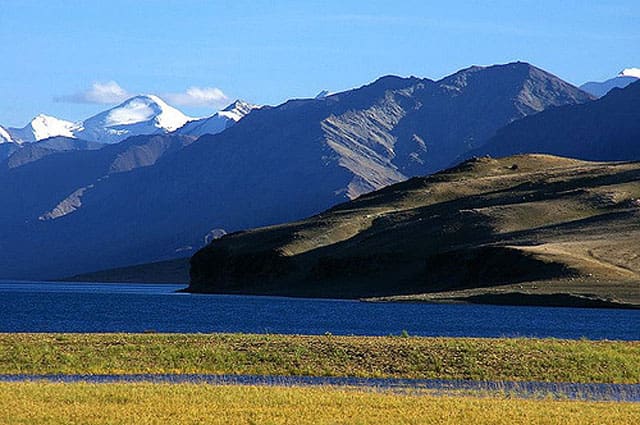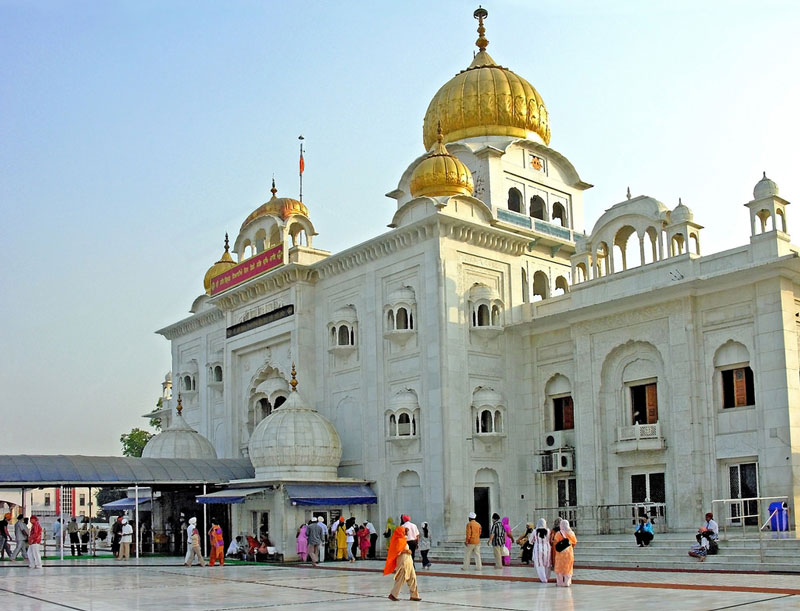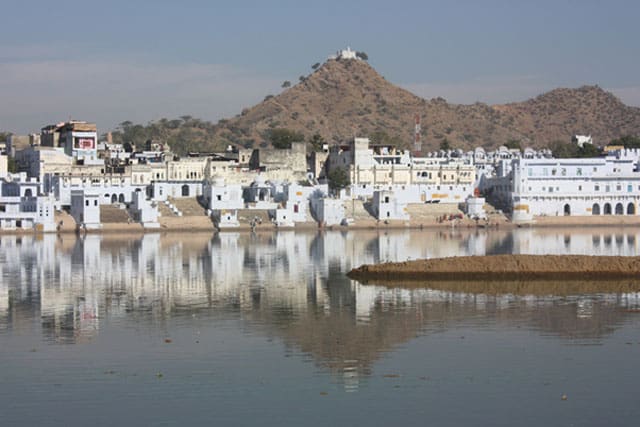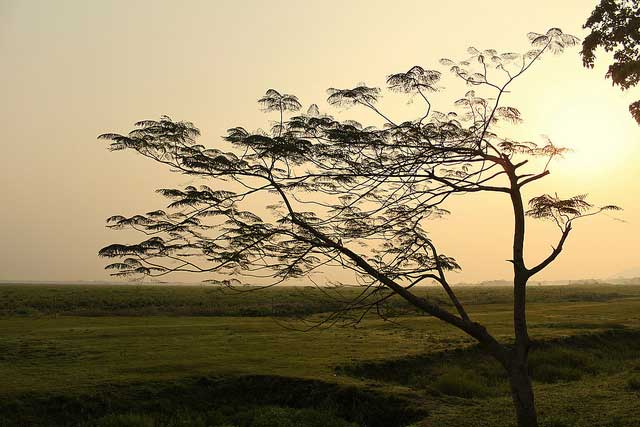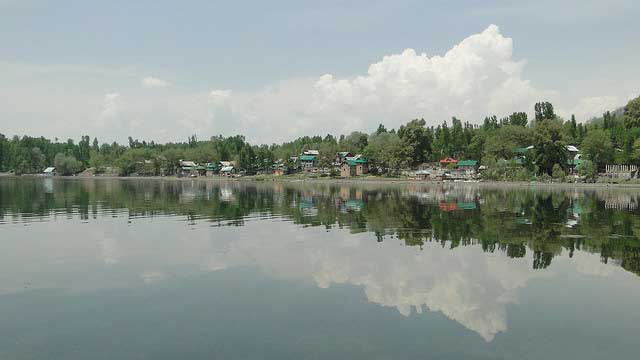Nestled amidst the towering peaks of the Himalayas, Ladakh beckons adventurers and spiritual seekers alike with its mystical allure. This remote region, situated in the northernmost part of India, boasts a landscape unlike any other, characterized by barren deserts, azure lakes, and ancient monasteries. Known as the “Land of High Passes,” Ladakh offers a journey into the heart of nature’s grandeur and cultural richness.
Places to Visit in Ladakh
1. Pangong Lake
Pangong Lake mesmerizes visitors with its ethereal beauty, spanning over 134 kilometers and extending from India to Tibet. Surrounded by rugged mountains, the lake’s crystal-clear waters showcase a myriad of shades, ranging from emerald green to deep blue. Camping by the lakeshore under the star-studded sky is a surreal experience not to be missed.
2. Nubra Valley
Nubra Valley unfolds like a paradise amidst the barren landscapes of Ladakh, adorned with verdant meadows and quaint villages. Travelers can traverse the dramatic Khardung La Pass to reach this oasis of tranquility and indulge in camel safaris amidst the towering sand dunes of Hunder. The valley also houses the iconic Diskit Monastery, offering panoramic views of the surrounding landscape.
3. Leh Palace
Leh Palace, perched atop a hill overlooking the bustling town of Leh, stands as a silent witness to Ladakh’s regal past. Built in the 17th century by King Sengge Namgyal, this nine-story palace reflects the architectural splendor of Tibetan palaces. Visitors can explore its labyrinthine corridors, adorned with intricate paintings and ancient artifacts, while enjoying panoramic views of the Indus Valley.
4. Magnetic Hill
Magnetic Hill presents a fascinating phenomenon where vehicles seemingly defy gravity and roll uphill on their own accord. This optical illusion has baffled scientists and intrigued travelers for decades, drawing curious visitors to witness this marvel of nature.
Things to Do in Ladakh
1. Trekking
Ladakh offers a paradise for trekking enthusiasts, with a plethora of trails catering to all skill levels. From the iconic Markha Valley Trek to the adrenaline-pumping Stok Kangri Expedition, adventurers can traverse rugged terrain, cross high mountain passes, and immerse themselves in the pristine wilderness of the Himalayas.
2. Monastery Visits
Immerse yourself in the spiritual essence of Ladakh by visiting its ancient monasteries, which serve as sanctuaries of peace and enlightenment. Hemis Monastery, nestled amidst the secluded valleys of Ladakh, hosts the vibrant Hemis Festival, celebrating the victory of good over evil. Thiksey Monastery, with its striking resemblance to the Potala Palace, and Diskit Monastery, perched on a hill overlooking the Nubra Valley, offer glimpses into Ladakh’s rich Buddhist heritage.
3. Wildlife Safari
Embark on a thrilling wildlife safari in Hemis National Park, home to elusive species such as the snow leopard, Tibetan wolf, and Himalayan ibex. Guided tours offer the opportunity to spot these magnificent creatures in their natural habitat, while exploring the pristine landscapes of Ladakh.
Climatic Conditions in Ladakh
Ladakh experiences extreme climatic conditions, characterized by harsh winters and short summers. The region remains inaccessible during the winter months due to heavy snowfall, with temperatures plummeting below freezing point. The summer season, from May to September, offers relatively milder weather, making it the ideal time to visit Ladakh.
Best Time to Visit Ladakh
The best time to visit Ladakh is during the summer months, from May to September, when the weather is pleasant and the roads are open for travel. This period allows visitors to explore the region’s scenic beauty, partake in adventure activities, and witness cultural festivities such as the Ladakh Festival and Hemis Festival.
How to Reach Ladakh
By Air
The quickest way to reach Ladakh is by air, with regular flights operating from major cities such as Delhi, Mumbai, and Srinagar to Leh’s Kushok Bakula Rimpochee Airport. The aerial journey offers breathtaking views of the Himalayan landscape, providing a glimpse of the region’s majestic beauty.
By Road
Travelers can embark on an epic road trip to Ladakh via the iconic Manali-Leh Highway or the scenic Srinagar-Leh Highway. These routes traverse through rugged terrain, high mountain passes, and picturesque valleys, offering an unforgettable journey amidst nature’s grandeur.
History of Ladakh
Ladakh’s rich history dates back to ancient times, shaped by a diverse array of cultures, including Tibetan, Indian, and Central Asian influences. The region served as a vital trade route along the historic Silk Road, fostering cultural exchange and architectural innovation. The majestic forts, monasteries, and palaces scattered across Ladakh stand as testament to its glorious past and enduring heritage.
Food in Ladakh
Ladakhi cuisine reflects the region’s rugged terrain and cultural diversity, featuring hearty dishes infused with bold flavors and spices. Traditional delicacies such as Thukpa (noodle soup), Momos (dumplings), and Chang (barley beer) are staples of Ladakhi cuisine, offering warmth and sustenance in the cold Himalayan climate.
Accessibility and Accommodation in Ladakh
Ladakh offers a range of accommodation options to suit every traveler’s needs, from luxury resorts and boutique hotels to cozy guesthouses and homestays. The bustling town of Leh serves as the main hub for accommodations, with ample facilities for transportation, dining, and shopping.
Nearby Hotels & Restaurants in Ladakh
Hotels
- The Grand Dragon Ladakh: A luxurious retreat offering panoramic views of the Himalayas and modern amenities for discerning travelers.
- The Zen Ladakh: A tranquil oasis nestled amidst lush gardens, offering serene accommodation and authentic Ladakhi hospitality.
- Hotel Shangrila Ladakh: A cozy abode in the heart of Leh, providing comfortable rooms, delectable cuisine, and warm hospitality.
Restaurants
- Tibetan Kitchen: A culinary haven serving authentic Tibetan and Ladakhi delicacies, including momos, thukpa, and butter tea.
- Gesmo Restaurant: A popular eatery known for its delicious Tibetan cuisine, vibrant ambiance, and friendly service.
- Bon Appetit: A cozy café offering a fusion of international flavors and local ingredients, perfect for a relaxed dining experience.
Tourist Attractions Near Ladakh
1. Zanskar Valley
Zanskar Valley entices adventurers with its rugged terrain, pristine rivers, and ancient monasteries. Accessible via the treacherous Zoji La Pass, this remote valley offers opportunities for trekking, river rafting, and exploring traditional Ladakhi villages. Visitors can also witness the annual Chadar Trek, a thrilling journey across the frozen Zanskar River, showcasing the region’s raw beauty and spiritual fervor.
2. Tso Moriri Lake
Tso Moriri Lake mesmerizes travelers with its surreal beauty and serene ambiance, nestled amidst the majestic mountains of Ladakh. This high-altitude lake, located at an elevation of 4,522 meters, is a haven for birdwatchers and nature enthusiasts, with sightings of migratory birds such as the black-necked crane and bar-headed goose. Camping by the lakeshore under the starlit sky offers a transcendent experience, away from the hustle and bustle of city life.
3. Hemis Monastery
Hemis Monastery stands as a cultural beacon in the heart of Ladakh, renowned for its vibrant festivals, ancient relics, and spiritual teachings. The monastery hosts the annual Hemis Festival, celebrating the birth anniversary of Guru Padmasambhava with colorful masked dances, traditional music, and religious ceremonies. Visitors can explore the monastery’s museum, housing a treasure trove of Buddhist artifacts and thangka paintings, offering insights into Ladakh’s rich cultural heritage.
How to Explore Ladakh
1. Plan Your Itinerary Wisely
Ladakh’s remote location and rugged terrain require careful planning to make the most of your visit. Research and plan your itinerary in advance, considering factors such as weather conditions, altitude sickness, and road accessibility. Allocate sufficient time to acclimatize to the high altitude and include buffer days for unforeseen delays or emergencies.
2. Pack Accordingly
Pack essentials such as warm clothing, sturdy trekking shoes, sunscreen, and a first-aid kit to ensure a comfortable and safe journey in Ladakh’s harsh terrain. Carry reusable water bottles and snacks to stay hydrated and energized during your adventures.
3. Respect Local Culture and Environment
Ladakh’s cultural heritage and fragile ecosystem deserve utmost respect and preservation. Practice responsible tourism by minimizing your environmental footprint, disposing of waste properly, and respecting local customs and traditions. Engage with the local community respectfully and seek permission before photographing individuals or religious sites.
4. Stay Hydrated and Acclimatized
Ladakh’s high altitude can pose challenges such as altitude sickness and dehydration. Stay hydrated by drinking plenty of water and herbal teas, and avoid alcohol and caffeine, which can exacerbate altitude-related symptoms. Take it slow upon arrival to allow your body to acclimatize gradually, avoiding strenuous activities until you feel comfortable with the altitude.
5. Stay Informed and Be Flexible
Stay informed about local weather conditions, road closures, and travel advisories before embarking on your journey. Be flexible with your plans and willing to adapt to changing circumstances, such as inclement weather or unforeseen events. Keep emergency contacts and essential documents handy, including copies of your passport, permits, and medical prescriptions.
Frequently Asked Questions (FAQs) about Ladakh
1. What is the altitude of Ladakh?
Ladakh’s average altitude ranges from 3,000 to 5,000 meters above sea level, with some areas exceeding 7,000 meters.
2. Is Ladakh safe for tourists?
Ladakh is generally considered safe for tourists, with low crime rates and a welcoming local population. However, travelers should exercise caution, especially while trekking in remote areas or during extreme weather conditions.
3. Do I need a permit to visit Ladakh?
Yes, Indian citizens require an Inner Line Permit (ILP) to visit certain restricted areas in Ladakh, while foreign nationals need a Protected Area Permit (PAP) to enter certain regions.
4. What is the best time to visit Ladakh?
The best time to visit Ladakh is during the summer months, from May to September, when the weather is pleasant and the roads are open for travel.
5. How do I travel within Ladakh?
Travel within Ladakh can be done by hired taxis, shared jeeps, motorcycles, or public buses. Self-driving is also an option for those familiar with the terrain and road conditions.
6. What are the must-try dishes in Ladakh?
Some must-try dishes in Ladakh include Thukpa (noodle soup), Momos (dumplings), Tsampa (roasted barley flour), and Butter Tea.
7. Can I trek in Ladakh without a guide?
While it’s possible to trek independently in some areas of Ladakh, hiring a local guide is recommended, especially for remote treks or high-altitude expeditions.
8. What precautions should I take for altitude sickness?
To prevent altitude sickness, travelers should acclimatize gradually, stay hydrated, avoid strenuous activities, and consider medications such as Diamox under medical supervision.
9. Are there ATMs and internet connectivity in Ladakh?
While major towns like Leh have ATMs and internet cafes, remote areas may have limited access to banking facilities and internet connectivity. It’s advisable to carry sufficient cash and inform your bank about your travel plans beforehand.
10. What are some cultural etiquettes to follow in Ladakh?
Some cultural etiquettes to follow in Ladakh include dressing modestly, removing shoes before entering monasteries or homes, seeking permission before photographing locals, and refraining from littering or disturbing wildlife.


